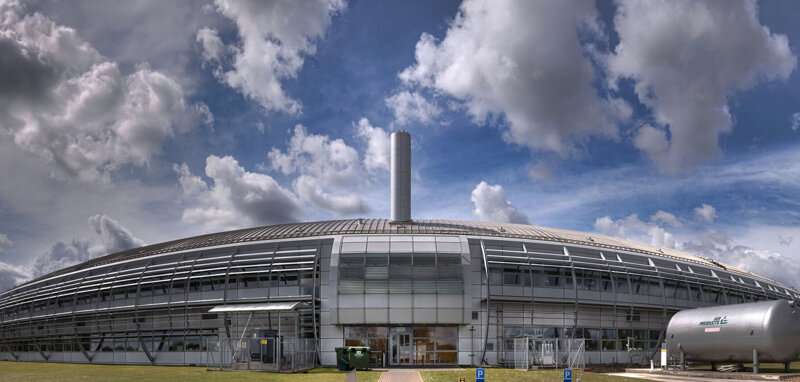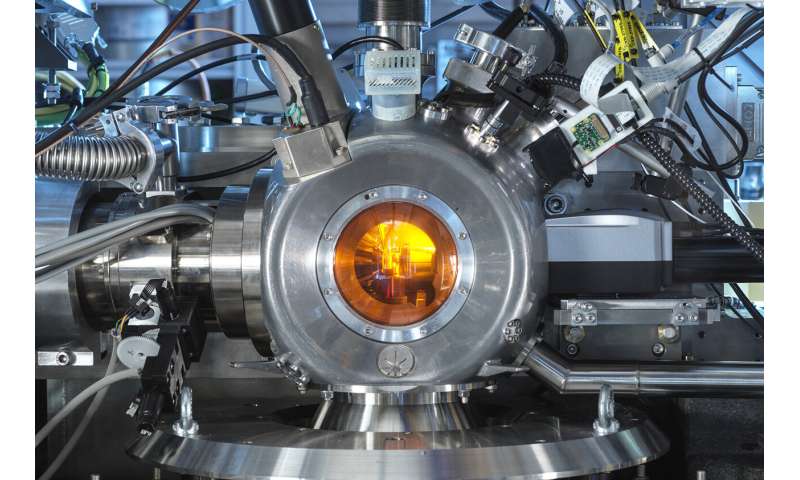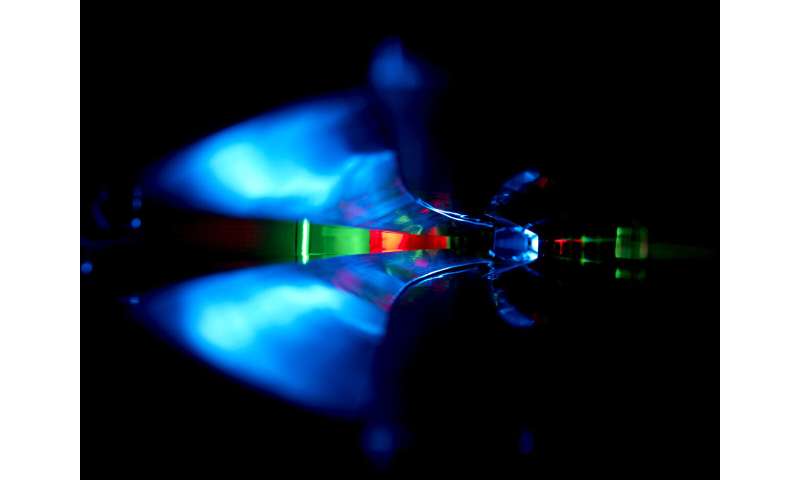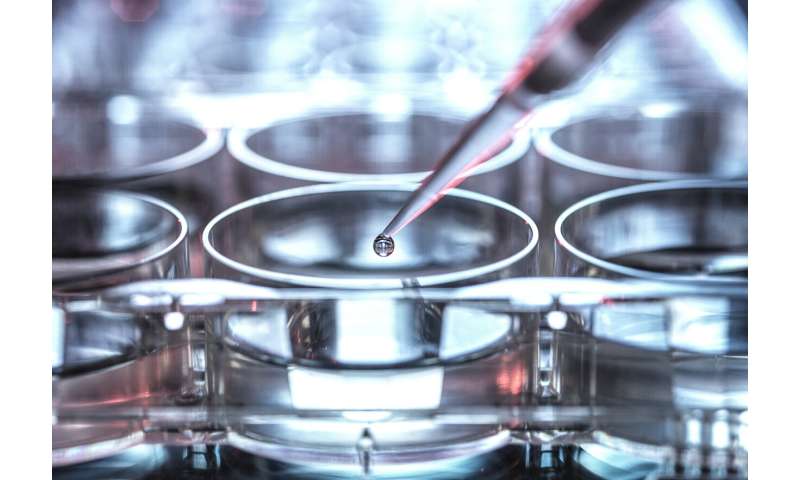Leading UK science facility celebrates Double Anniversary revealing Diamond-II

This year marks 15 years of Diamond Light Source delivering science and innovation to the worldwide science community and 20 years since it was set up in 2002. To commemorate this double anniversary, and cement its position as a world-leading research facility, it is revealing plans for Diamond-II which has recently been granted preliminary funding. This will be a transformational upgrade and enable a huge expansion of UK science capabilities as it involves a coordinated programme of development combining state-of-the-art technology in a new machine, five new beamlines and a comprehensive series of upgrades to transform Diamond's ability to generate scientific knowledge and impact on 21st century global challenges. Additionally, it is also curating a special outdoor photographic exhibition made up of over 70 stunning scientific images selected from Diamond's science archive taken over the past two decades.
"We are entering a new era of opportunity with the advent of fourth generation synchrotrons. Progress in accelerator technology means Diamond-II will offer the scientific community in academia and industry the opportunity to exploit much brighter photon beams and an increased coherence over a large energy range on all our beamlines and additional beamlines. It will help inspire the next generation of STEM professionals and create new opportunities for researchers in universities, research institutes and industry, ultimately having a lasting impact on our society and the economy," comments Prof. Andrew Harrison, CEO of Diamond.
He adds that Diamond's success owes a great debt of gratitude to the trust and commitment of its funding agencies the UK Research and Innovation's STFC (Science Technology and Facilities Council) and the Wellcome Trust who have provided ongoing support and are fully behind Diamond-II.
The Anniversary Science Images exhibition will be open to the public as part of Oxfordshire's annual ArtWeeks Festival from 14th-22nd May. Visitors will be able to view the images on sections of Diamond's exterior perimeter fence surrounding its huge iconic 'silver doughnut' shaped building. The images chosen to make up the exhibition were selected from Diamond's rich science archive to give an insight into what goes on inside this leading science facility whilst also capturing the beauty of it. The pictures were taken by a range of professional photographers, plus some of the scientists themselves. Images range from artistic images of the building and its state-of-the-art technology to microscopic pictures of scientific samples being examined. These latter pictures are taken using the special technology and super bright light from Diamond's beamlines which help scientists to make the invisible visible and advance science.

Andrew Harrison says; "We are delighted to share these stunning images of science in action at Diamond. Our specialised technology is set up to take great images of our instrumentation and these can be astoundingly beautiful. This anniversary exhibition will show people just how wonderful and inspirational science and engineering can be."
The chosen images have been blown up to around 1.2m x 0.8 metres or larger and have been directly printed onto aluminium weatherproof boards. Each picture will have an accompanying caption to explain what it depicts and there will also be an online 'flipping book' available to download which will feature all the images and accompanying text.
Located on the Harwell Science and Innovation Campus near Didcot in Oxfordshire, Diamond first opened its doors to users in 2007. Over the past 15 years, Diamond has experienced considerable growth and helped its 14,000 strong user community achieve many science breakthroughs and aided them in tackling some of the most challenging scientific questions of the 21st century. Today Diamond is recognised as one of the most advanced scientific facilities in the world, and its pioneering capabilities are helping to keep the UK at the forefront of scientific research. A study published in 2021 estimated a cumulative monetised impact of at least £1.8 billion from Diamond reflecting very favourably with the £1.2 billion investment made in the facility to date. And all for less than a cup of coffee as each taxpayer contributes only £2.45 a year towards it. (See https://doi.org/10.5281/zenodo.4769839 ).
For further information: please contact Diamond Communications: Lorna Campbell +44 7836 625999 or Isabelle Boscaro-Clarke +44 1235 778130 Diamond Light Source: www.diamond.ac.uk Twitter: @DiamondLightSou

Diamond Light Source | Oxfordshire Artweeks https://www.artweeks.org/v/diamond-light-source- This year's festival runs from 7th—29th May 2022 (Oxford City 7th—15th, South Oxfordshire May 14th—22nd & North & West Oxfordshire 21st—29th) www.flipsnack.com/oxfordshireartweeks/oxfordshire-artweeks-festival-guide-2022.html
Diamond Light Source: works like a giant microscope, harnessing the power of electrons to produce bright light that scientists can use to study anything from fossils to jet engines to viruses and vaccines. The machine accelerates electrons to near light speeds so that they give off light 10 billion times brighter than the sun. These bright beams are then directed off into laboratories known as 'beamlines'. Here, scientists use the light to study a vast range of subject matter, from new medicines and treatments for disease to innovative engineering and cutting-edge technology. Whether it's fragments of ancient paintings or unknown virus structures, at the synchrotron, scientists can study their samples using a machine that is 10,000 times more powerful than a traditional microscope.
More information on Diamond-II : https://www.diamond.ac.uk/Diamond-II.html
A new generation of lightsources: The proposed Diamond-II new machine lattice will be based on Double Triple Bend Achromats (DTBAs). This means an increased brightness and coherence of a factor of up to 70 and provides mid-section straights to retain and enhance all beamlines on bending magnets while offering additional sources for 5 new beamlines. This design increases the electron beam energy from 3.0 to 3.5 GeV providing greatly increased photon flux at higher energies.

To match the extraordinary gains offered by the Diamond-II machine there will be a major renewal and upgrade of existing beamline technologies to meet the new scientific demands. Diamond-II will see enhancements in beam quality and beam stability through new X-ray optics and instrumentation, state-of-the-art sample delivery, and manipulation through the development of optimised sample environments and scientific software solutions that meet the beamline demands for the acquisition, visualization and analysis of data.
The huge gains in throughput for many experiments will necessitate a transformation in Diamond'sability to gather, manage and analyse the vast data volumes and data rates that will be generated.
Download and learn more about the details of the upgrade and engineering developments that Diamond-II will facilitate in The Conceptual Design Report. Caption: Schematic of the current Diamond DBA (Double Bend Achromat, bottom) and the proposed design for a DTBA (Double Triple Bend Achromat) for Diamond-II (top).
Provided by Diamond Light Source